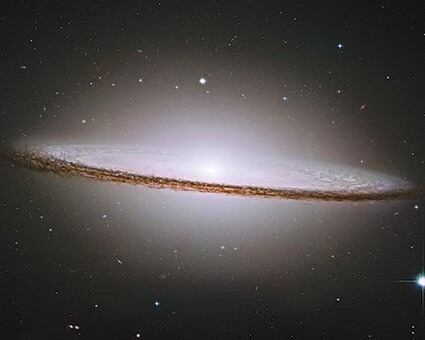Stars over Sisters
Last updated 4/28/2020 at Noon

The stunning Sombrero Galaxy is 29 million light-years away in the constellation of Virgo. photo provided
We Oregonians are still faithfully practicing social distancing as a way to deal with the coronavirus pandemic. At least we’ll have some fine sights to see in the night sky to help pass the time.
One of the more prominent springtime constellations is Virgo. It is also the largest zodiacal constellation and second biggest overall; only Hydra takes up more area of the celestial sphere. Virgo is easy to locate because of the constellation’s brightest star Spica, sixteenth brightest in the entire sky. Start at the Big Dipper and follow the arc of its handle to Arcturus, brightest star in Boötes. From here continue arcing southward and the next bright star will be Spica.
Because the earth’s axis of rotation is tilted with respect to its orbit around the sun (the ecliptic), the planes of the celestial equator and the ecliptic are not coincident. As a result, the two planes intersect at two locations in space (called nodes). One of these nodes resides in Virgo not far from the star Beta Virginis. Autumn officially begins when the sun reaches this point on its annual journey across the sky. The other node, that marks the beginning of spring, is in Pisces.
Virgo and its neighbor to the north, Coma Berenices, contain the largest collection of bright galaxies found anywhere in the sky. And many of them are within reach of modest-sized backyard telescopes. Some have strange-sounding names, such as the Eyes Galaxies (NGC 4435 and NGC 4438) and the Siamese Twins Galaxies (NGC 4567 and NGC 4568). But the most visually impactful has to be M104, the famous Sombrero Galaxy, so named because its appearance resembles a Mexican sombrero to many.
The galaxy has a bright white core that is surrounded by thick dust lanes and it has a halo made up of older stars and globular clusters. Some astronomers believe that M104 is actually two galaxies in one, a thin disk galaxy within the large elliptical galaxy. But not everyone buys into this theory, as some think the small disk galaxy would have not likely survived the collision. This impressive object is located some 29 million light-years from Earth.
In Greek mythology there are many versions of Virgo’s story. One of these tales relates Virgo with Dike, the goddess of justice. Dike was the daughter of Zeus and Themis, who was born a mortal and put on Earth to rule human justice. Zeus introduced the four seasons to humankind, but they began to not honor the gods like they did before. Dike warned the people not to abandon the ideals of their predecessors or worse things would come. When wars began to break out Dike declared that the people were too evil, and she didn’t want to deal with them anymore. So, she left Earth and ascended into the sky, to where Virgo is today.
On May 21 Mercury and Venus will lie about a degree apart in the western sky 45 minutes after sunset. If you’ve never seen the solar system’s smallest planet before, now is your chance. Once you catch sight of Venus (you will have no trouble doing this), the dimmer Mercury will lie nearby. The morning sky features the two gas giants Jupiter and Saturn, positioned about five degrees apart all month.
The moon is closest to the earth, called perigee, on May 5 when it comes within 223,478 miles at 8:03 p.m. local time. By 12:45 a.m. on May 18 the moon will reach its farthest point from the earth (apogee), a distance of 252,018 miles.
A full moon will light up the night sky on May 7, then go on the wane. By May 22 our only natural circling orb will disappear into the sun’s glare before reemerging to begin anew another cycle of phases.
















Reader Comments(0)